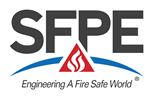FEMTC 2016
A Method Of Smoke Dispersion Modelling Of Exhausted Tunnel Fire Smoke In Urban Areas 
Brian Lee - SNC Lavalin
Abstract
In many urban areas around the world, underground rapid transit systems are increasingly utilized for daily transportation. These systems are often equipped with tunnel ventilation systems (TVS) used to evacuate smoke away from underground stations in a train fire scenario. This is achieved by pulling fresh air in from station entrances to replace contaminated exhaust air. While typically many CFD studies are performed to optimize smoke ventilation strategy within station and platform areas, it has also become desirable to review the impact of the evacuated smoke in a station fire to the surrounding urban areas, to optimize smoke ventilation shaft design and location. Additionally, by studying the smoke dispersal effects on nearby buildings in an urban area, implementation of proposed solutions can improve the safety protocols for occupants in adjacent buildings thus reducing their exposure risk during a station fire emergency. Since TVS ventilation shafts are usually located adjacent to station entrances, recirculation of smoke can pose a risk in certain wind scenarios. his risk of short-circuiting smoke could result in evacuating passengers encountering the very smoke they are evacuating from. This paper outlines a method for using Fire Dynamics Simulator (FDS) for modelling smoke dispersal analyses (SDA) in urban and suburban areas, setting up wind parameters and determining wind effects on exhausting tunnel smoke from underground ventilation shafts.
Presentation
Resources
| Paper | Presentation | ||
|---|---|---|---|
| HTML | HTML | ||
| Resources Archive File (.zip) | |||

